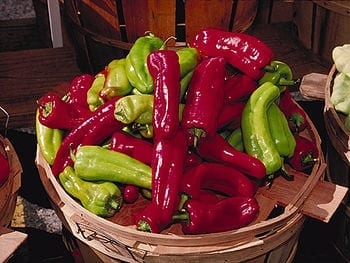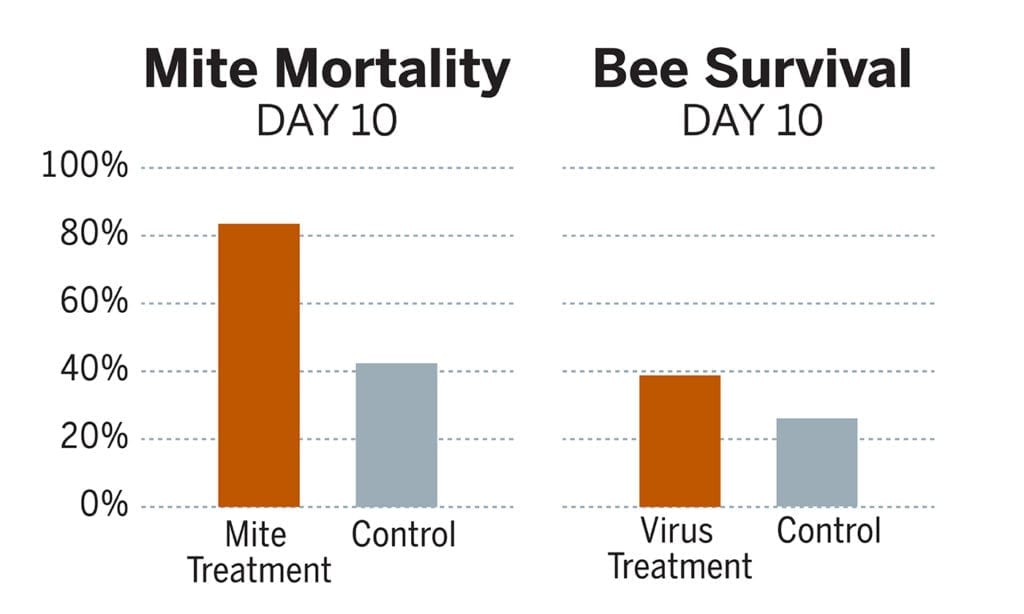By combining traditional plant breeding with ever-faster genetic sequencing tools, researchers are making fruits and vegetables more flavorful, colorful, shapely and nutritious
Armed with toothpicks and sour cream, Michael Mazourek and three friends marched into the field of 600 chili pepper plants. One by one, they pierced the habaneros and brought the juices to their tongues, cooling and cleansing their palates with cream now and then. Habaneros are typically some of the hottest chilies around, ranking as high as 350,000 on the Scoville scale of pepper pungency—40 times hotter than the jalapeno.
The habaneros Mazourek and his team had grown in this experimental field at Cornell University were in no way typical, however. The four graduate students knew that, due to an unidentified genetic mutation, a portion of the peppers would not be very spicy. Exactly what they would taste like was a mystery. If a particular habanero’s juices indicated that it was relatively mild, they bit into it like an apple. Some of the peppers were smoky; others astringent. Some tasted faintly of sausage; others had the foul funk of gym socks. But the most interesting peppers by far possessed all the complex aroma and flavor of a habanero, yet none of its heat. A few months earlier Mazourek had received a shipment of seeds from researchers at New Mexico State University. These seeds, they said, grew into habanero plants whose red peppers did not even register on the Scoville scale.
Knowing that Mazourek was a plant breeder interested in pepper pungency, the New Mexico scientists thought he might like to study the tame habaneros himself. Mazourek raised the seeds he got in the mail into adult plants and mated them with ordinary habaneros. Inside greenhouses he carefully transferred pollen between flowers on the two kinds of plants with tweezers, ensuring that the resulting offspring and, eventually, the 600 grandchildren would have a mix of their parents’ DNA. After growing that third generation in a quarter-acre field, he recruited some fellow scholars for the intrepid taste test. As the friends ate the unusual peppers, they snipped off leaves from each plant, which they later crushed and liquefied to examine the DNA within. By syncing the results of the DNA analysis with what their palates had told them, the team managed to identify a specific genetic mutation that explained why some of the peppers lacked heat.
Chili peppers get their fire from an oily molecule called capsaicin, which is produced by glands within the fruit—those leathery, seed-covered white or yellow bits that people usually cut out of a pepper. As it turns out, the same bucket brigade of chemical reactions responsible for making capsaicin is also essential for concocting a bouquet of associated compounds that give a pepper its scent. The heatless habaneros had inherited a mutation that nearly—but not completely—shut down their capsaicin factories, leaving the glands just functional enough to eke out a drop of capsaicin and fragrant molecules here and there. Seeing a unique opportunity, Mazourek and his colleagues spent the next several years making crosses between various plants in an attempt to create a single variety that reliably produced habaneros with plenty of zest but no heat. Having illuminated pungency genetics, they no longer had to wait for plants to grow up and work their taste buds overtime simply to find out if the peppers were spicy or not. Instead, they could take a leaf from a young plant, analyze its DNA and determine whether it would produce blazing or bland peppers before deciding whether to raise it to maturity—a trick that made the whole breeding process more efficient.
Today, their prized pepper is persimmon orange, a bit longer than a typical habanero and wonderfully piquant. They call it a habanada, as in no burning heat—nada, zip. Cornell hopes to license the habanada to a major seed company soon for wider distribution. Mazourek belongs to a new generation of plant breeders who combine traditional farming with rapid genetic analysis to create more flavorful, colorful, shapely and nutritious fruits and vegetables. These modern plant breeders are not genetic engineers; in most cases they do not directly manipulate plant DNA in the lab. Rather, they sequence the genomes of many different kinds of plants to build databases that link various versions of genes—known as alleles—to distinct traits. Then, they peek inside juvenile plants to examine the alleles that are already there before choosing which ones to grow in the field and how best to mate one plant with another. In some cases breeders can even analyze the genetic profiles of individual seeds and subsequently select which to sow and which to disregard, saving them a great deal of time and labor.
Plant breeders have, of course, always used the best tools available to them. But in the last 10 years or so they have been able to approach their work in completely new ways in part because genetic sequencing technology is becoming so fast and cheap. “There’s been a radical change in the tools we use,” says Jim Myers of Oregon State University, who has been a plant breeder for more than 20 years and recently created an eggplant-purple tomato. “What is most exciting to me, and what I never thought I would be doing, is going in and looking at candidate genes for traits. As the price of sequencing continues to drop, it will become more and more routine to do sequences for every individual population of plants you’re working with.”
The Latest on: Genetic sequencing
[google_news title=”” keyword=”Genetic sequencing” num_posts=”10″ blurb_length=”0″ show_thumb=”left”]
via Google News
The Latest on: Genetic sequencing
- Scientists Sequence Arabica Genome, Opening Doors to Climate-Resilient Coffeeon May 5, 2024 at 8:09 pm
The work makes it possible to tell the story of the fusion of genomes that gave rise to the world’s most consumed species, as well as identifying genes responsible for resistance to rust and other ...
- DNA Sequencing Market Size Anticipated to Soar to New Heights in the Futureon May 5, 2024 at 2:46 pm
Request To Download Free Sample of This Strategic Report @:- https://reportocean.com/industry-verticals/sample-request?report_id=bw1696 ...
- Scientists detect genetic mechanism that determines sex in butterflieson May 5, 2024 at 8:48 am
A new study reveals a genetic mechanism that determines the sex of butterflies, offering insights into evolution and conservation.
- Targeted DNA RNA Sequencing Market To Reach USD 51.3 Billion By 2032 | DataHorizzon Researchon May 5, 2024 at 12:30 am
The popularity of targeted DNA RNA sequencing drives industry developments. In 2023, the targeted DNA RNA sequencing market experienced growth, primarily driven by the cost-saving advantages offered ...
- This biogeochemist was key to extracting DNA from an ancient sample that had stumped scientists for yearson May 4, 2024 at 9:04 am
Sand’s knowledge of DNA-mineral interactions proved pivotal in guiding the team’s DNA extraction protocols. Her research centers on how minerals latch on to and preserve DNA, and she and her ...
- DNA Help Solve Identity of Jane Doe Found 30 Years Ago in Coachella, But Case Still Remains a Mysteryon May 3, 2024 at 8:24 am
Investigators identified the Jane Doe as Clare Antonia Dvorak, who was born in 1907, and have labeled her death a homicide.
- Why the first scientist to publish the Covid-19 genome sequence protested in Chinaon May 3, 2024 at 12:22 am
Zhang Yongzhen’s work in early 2020 helped in the creation of vaccines against coronavirus. What exactly happened at the time and what is his situation now?
- 'Genetic programs' allowed the ancestor of all plants to conquer dry landon May 3, 2024 at 12:00 am
We now know just how the earliest land plants, ancient algae, conquered terrestrial Earth hundreds of millions of years ago and laid the (literal) groundwork for all subsequent life. It highlights the ...
- DNA sequencing reveals cause of rare neurological disorderon April 30, 2024 at 4:31 am
After a 25-year-long search, a new sequencing technique has helped researchers pinpoint the genetic cause of SCA4, a rare movement disorder. Spinocerebellar ataxia 4 (SCA4) is a rare genetic condition ...
- AI deciphers new gene regulatory code in plants and makes accurate predictions for newly sequenced genomeson April 26, 2024 at 9:05 am
Genome sequencing technology provides thousands of new plant genomes annually. In agriculture, researchers merge this genomic information with observational data (measuring various plant traits) to ...
via Bing News











